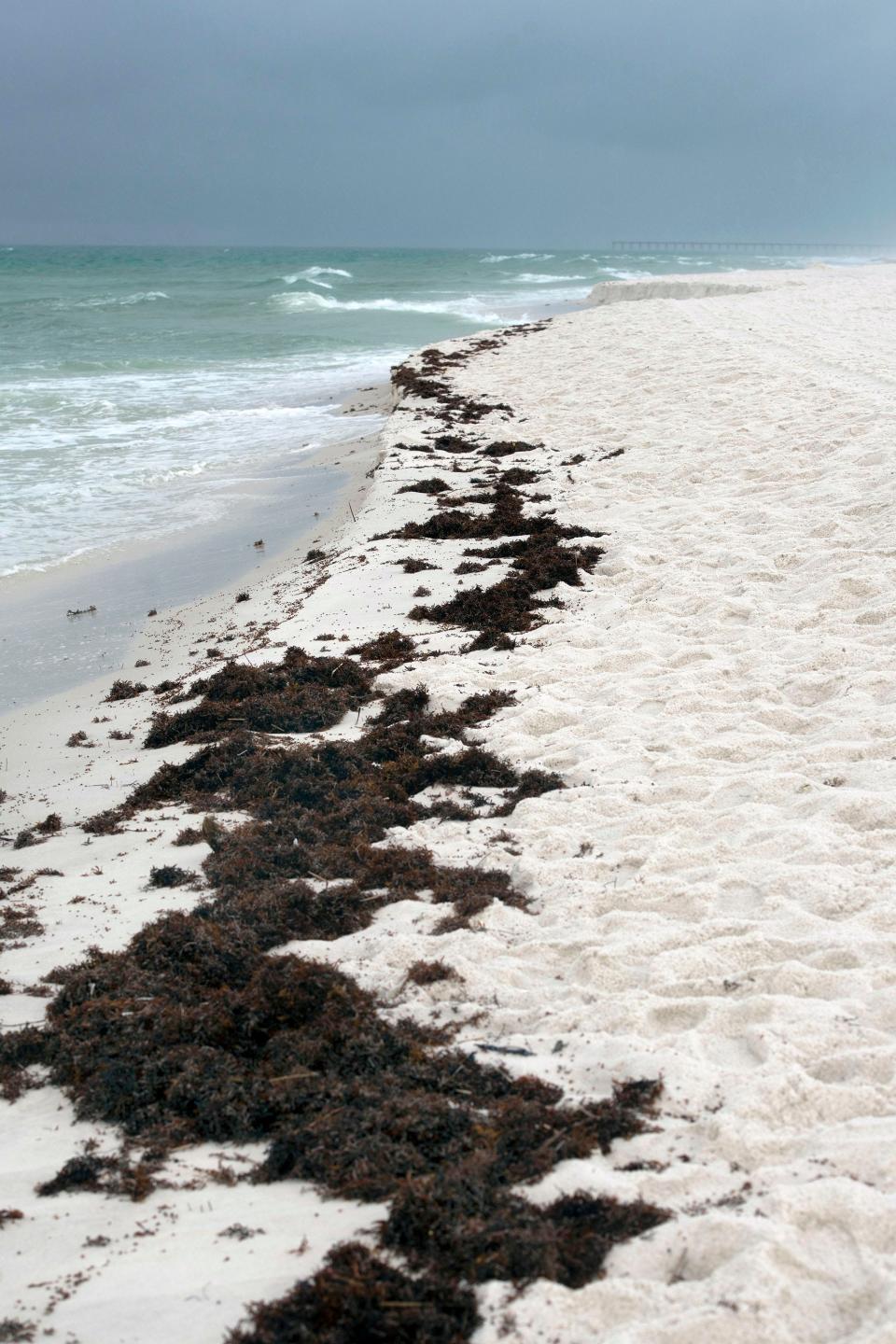6.5 million metric tons of sargassum is heading toward Florida again. What to know
Will sargassum, a brown and smelly seaweed that’s generally unpleasant to be around, once again wash up on the shores of Florida beaches?
For researchers, the question isn’t about if but when and where. That’s what they’re trying to work out now as more than 6.5 million metric tons of sargassum is slowly drifting its way eastward from the Great Atlantic Sargassum Belt, the largest algae bloom in the world.
In October 2023, researchers at the College of Marine Science received a $3.2 million grant from the NOAA Monitoring and Event Response for Harmful Blooms program, which aims to better forecast sargassum blooms and prevent them from becoming a bigger nuisance for coastal communities.
The latest sargassum outlook, issued for March 2023, pegged late May as the timeframe when the southeast coast of Florida, which includes the Florida Keys, will start seeing seaweed appearing in larger quantities.
Here’s what to know about sargassum heading toward Florida this summer.
What is sargassum?
Sargassum is the scientific name for brown seaweed, which floats in the ocean and appears in large amounts on Florida beaches.
Like most things in the world, sargassum isn’t exactly bad. It is an important habitat for migratory organisms that have adapted to nomadic life. Crabs, shrimp, sea turtles and other commercially important fish like tuna and marlin call the floating algae home, according to the Florida Department of Health (FDOH).
However, sargassum can be a detriment, too. Tiny sea creatures that live in sargassum can irritate the skin if you come into direct contact with the algae, it can smell like rotting eggs when decomposing and excessive amounts of it can cause several environmental and economic problems.
Is sargassum harmful to humans?
Sargassum can have negative effects to people in two ways: direct contact and breathing in hydrogen sulfide gas. Neither are likely to have long term impacts on a person’s health, but beaches with heavy sargassum should generally be avoided.
When sargassum begins to decompose, it produces hydrogen sulfide gas, which gives off a smell like rotten eggs. According to the FDOH, hydrogen sulfide can irritate the eyes, nose and throat. People with asthma or other breathing illnesses will be more sensitive, and anyone breathing in hydrogen sulfide may have temporary breathing issues after it’s been inhaled.
Hydrogen sulfide doesn’t cause cancer in people, and only long-time exposure with little air flow could lead to health issues, according to FDOH.
Touching sargassum itself isn’t likely to sting or cause rashes, but tiny organisms that live among the sargassum, like larvae of jellyfish, can irritate the skin.

Is sargassum good for anything?
In normal amounts, sargassum plays an important role in serving as a habitat for lots of marine animals, like fish, shrimp, crabs and turtles.
It can also be used as fertilizers for sand dunes and helps protect shoreline stability, according to the University of South Florida. However, the National Oceanic and Atmospheric Administration prohibits harvesting sargassum in U.S. waters without authorization.
The floating algae serves as a marine resource, too, providing uses as biomass for food, fuel and a possible source of pharmaceutical materials.
USF states that it can be used to fix and sequester carbon, which reduces carbon dioxide and helps mitigate climate change.
How to protect yourself from sargassum exposure
The presence of sargassum isn’t an immediate cause for concern. Here are some tips on how to protect yourself from exposure.
Always supervise children at the beach
Avoid touching or swimming near the seaweed
If you have to handle sargassum, use gloves
Avoid the beach if you begin experiencing irritation or breathing problems from hydrogen sulfide
Close your windows and doors if you live near the beach
Limit the amount of time you spend at the beach if you have respiratory issues
Sargassum forecast 2024
USF noted a decrease in the amount of sargassum between February and March, from 9 million metric tons in February to about 6.5 million metric tons in March. The university experts hypothesize that the unusual decline could be a result of weaker-than-usual winds, however, the levels found in March are still 75% above all previous March months, so this year could still be a major year for sargassum.
Sargassum is expected to increase in the central Atlantic over the next few months. Coastal regions in the western Caribbean Sea will begin to see small to moderate amounts of sargassum around late April to early May. The southeast coast of Florida won’t see much sargassum until late May.
Will Pensacola Beach have sargassum this year?
Scientists are still working toward determining where sargassum will end up this year. As of now, their focus is turned toward South Florida, which typically sees the largest amount of sargassum. It’s unclear if and how much sargassum could appear on Pensacola area beaches.
This article originally appeared on Pensacola News Journal: Sargassum 2024 forecast: Will Florida beaches get buried again?

